Contents
- Sri Guru Nanak Dev ji
- Eradicating TB by 2025
- National Investment and Infrastructure Fund (NIIF)
- PRAGATI
SRI GURU NANAK DEV JI
Focus: GS 1 ; Indian culture will cover the salient aspects of Art Forms, literature and Architecture from ancient to modern times.
Why in News?
PM Releases Book on the Life of Sri Guru Nanak Dev ji
About Sri Guru Nanak Dev Ji
- The Guru Nanak Dev Ji (1469-1539) was born in a village, Talwandi Rai Bhoe, near Lahore (it was renamed later as Nankana Sahib).
- The Guru Nanak Dev Ji initiated inter-faith dialogue way back in the 16th century and had conversations with most of the religious denominations of his times.
- The Guru Nanak Dev Ji, also referred to as Baba Nanak, was the founder of Sikhism and is the first of the ten Sikh Gurus.
- His birth is celebrated worldwide as Guru Nanak Gurpurab on Katak Pooranmashi i.e October – November.
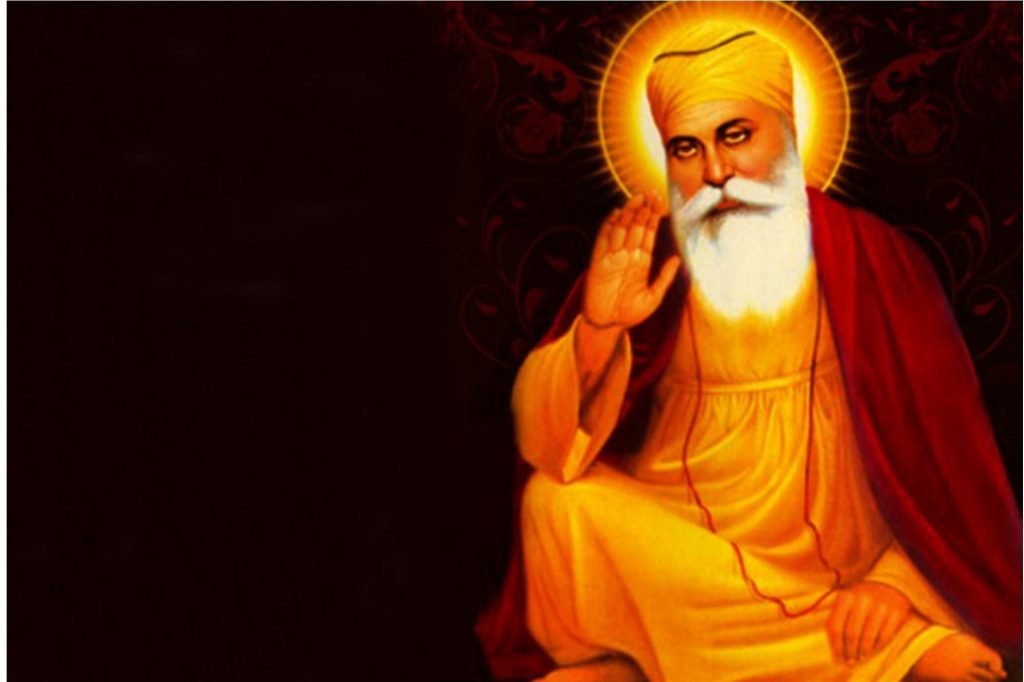
- His written compositions were included in the Adi Granth compiled by Guru Arjan (1563-1606), the fifth Sikh guru.
- This came to be known as Guru Granth Sahib after the additions made by the 10th Guru Gobind Singh (1666-1708).
- In compiling the Adi Granth, Guru Arjan showed a remarkable commitment to pluralism while retaining the unity of thought initiated by Guru Nanak Dev.
- He advocated Nirguna Bhakti.
- He firmly repudiated practices of religions around him like sacrifices, ritual baths, idol worship, austerities, and scriptures of both Hindus and Muslims.
- He appointed Angad to succeed him as the Guru.
- He never wished to establish new religion, but after his death his followers consolidated his practices and distinguished from both Hindus and Muslims by calling themselves ‘Sikhs’.
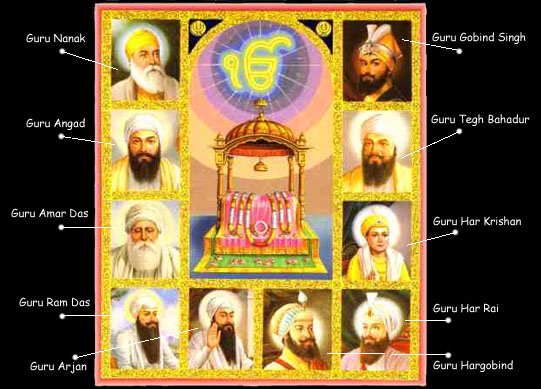
Above attached image of all the 10 Guru’s of Sikhism.
About Guru Nanak’s Teachings
- The Guru Nanak emphasized the worship of one God and insisted that caste, creed, and gender were irrelevant to attaining salvation.
- According to him, pursuit of an active life would liberate humans, and he also used the terms nam, dan, and isnan to mean right worship, welfare, and purity of conduct.
- His ideas today are called nam-japna, kirt-karna, and vand-chhakna, which mean right belief and worship, honest living, and helping others.
- Thus, Guru Nanak’s idea of equality had social and political implications.
About the 5 teachings of Guru Nanak Ji which are still relevant in todays time
About “The One God”
- The Guru Nanak ji said “I am neither hindu nor Muslim, I am follower of God”, which actually spoke about his belief in one God. In Sikhism, the god is omnipresent, shapeless, timeless and sightless. (Nirankar, akar, alakh)
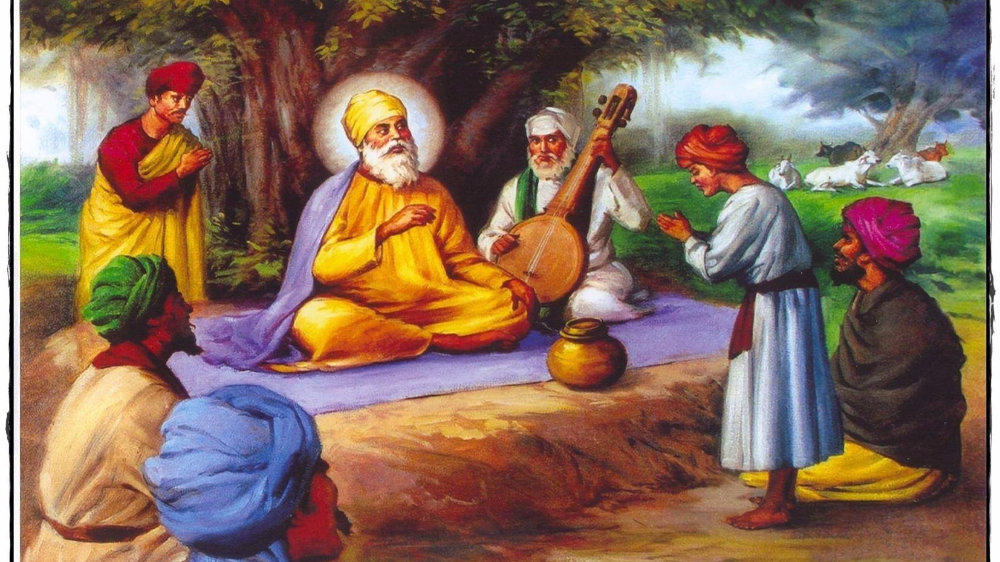
About No Discrimination
- The Guru Nanak Ji was strongly against all artificially created divisions and all discriminations, both in word and deed.
About Stay Away
- The Guru Nanak ji asked his followers to shun five evils of Ego, Anger, Greed, Attachment and Lust and adopting five virtues Truth, Compassion, Contentment, Discipline and Contemplation.
About Importance of Guru
- The Guru Nanak Ji laid great emphasis on having the importance of Guru in one’s Life.
About Sewa is the Key to Humanity
- As Said by Guru Nanak Ji “In the midst of this world, do Sewa and you shall be given a place of honor in the court of the Lord”.
- The Problem with today’s generation is we have limited Guru Nanak Ji and his teaching just to Guru Granth Sahib and have not adopted it, i.e., moral philosophy is lacking. Therefore, there is a strong need to revive the values and teachings of Guru Nanak Dev Ji.
Please click on this link and Refer detailed Explanation about Sikhism.
Extra Info
About Kartarpur Corridor
- The corridor will connect Darbar Sahib in Kartarpur (Pakistan) with Dera Baba Nanak shrine in Gurdaspur district of Punjab and facilitate visa-free movement of Indian pilgrims, who will have to just obtain a permit to visit Kartarpur Sahib, which was established in 1522 by Sikh faith founder Guru Nanak Dev Ji.
- The corridor will help India and Pakistan to go peaceful in their relations.
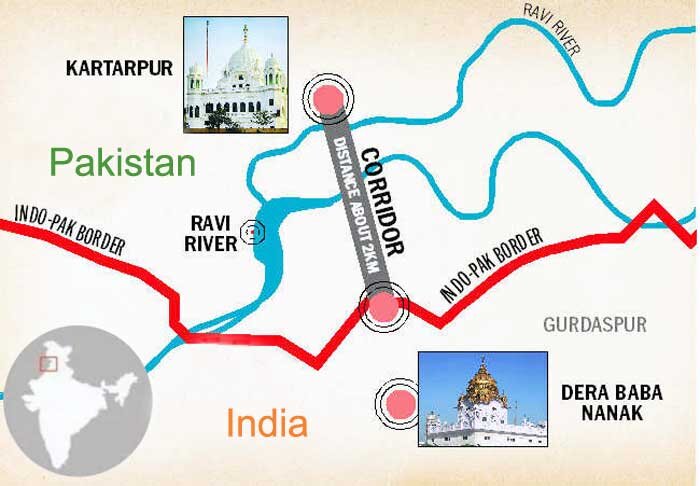
ERADICATING TUBERCULOSIS (TB) BY 2025
Focus: GS 2; Issues relating to development and management of Social Sector/Services relating to Health, Education, Human Resources.
Why in News?
Dr Harsh Vardhan meets Development Partners to discuss the challenge and opportunity in eradicating TB by 2025; Sets the way forward
About TB Eradicating by 2025
- The TB is caused by bacteria (Mycobacterium tuberculosis) that most often affect the lungs.
- The TB is spread from person to person through the air, when people with TB cough, sneeze or spit, they propel the TB germs into the air.

- The Tuberculosis (TB) is a global pandemic and continues to be a huge public health threat in India.
- It currently has 27 per cent of the world’s new TB cases, which is around 2.8 million.
- According to World Health Organisation (WHO), the country holds the dubious distinction of being the TB capital of the world as around 480,000 people died due to the disease in 2014.
- As per Stop TB, 1:4 people with TB worldwide is an Indian.

Above image attached of India’s Target for TB Eradication.
- The India’s vision to end TB by 2025, five years ahead of the World’s Target under SDG’s.

Above image attached on Global Targets by The United Nations Sustainable Development Goals (SDGs) include ending the TB epidemic by 2030 under Goal 3.
About National Strategic Plan for TB Elimination
- The implementation of National Strategic Plan for TB Elimination (NSP 2017-25) has started in January 2017 and the funds allocated for FY 2018-19 is Rs.2770.91 crore which includes funds for cash transfers and social welfare schemes.
- The Vision of NSP for TB elimination 2017–25 is TB-Free India with zero deaths, disease and poverty due to tuberculosis. The goal of NSP for TB elimination 2017–25 is to achieve a rapid decline in burden of TB, morbidity and mortality while working towards elimination of TB in India by 2025.
- The Key Components of National Strategic Plan For Tuberculosis Elimination 2017–2025 are as follows
- The early diagnosis of all the TB patients, prompt treatment with quality assured drugs and treatment regimens.
- The suitable patient support systems to promote adherence.
- The engaging with the patients seeking care in the private sector.
- The prevention strategies including active case finding and contact tracing in high risk / vulnerable population.
- The airborne infection control.
- The multi-sectoral response to address social determinants.
- The advocacy, Communication and Social Mobilization activities to promote awareness regarding TB among all the sections of the society.

The Strategic pillars of National Strategic Plan for TB elimination 2017–25
- The requirements for moving towards TB elimination have been integrated into the four strategic pillars of “Detect – Treat – Prevent – Build” (DTPB).
- DETECT – Find all TB cases with an emphasis on reaching TB patients seeking care from private providers and undiagnosed TB in high-risk populations.
- TREAT – Initiate and sustain all patients on appropriate anti-TB treatment wherever they seek care, with patient friendly systems and social support.
- PREVENT -Treatment for latent TB infection in contacts of bacteriologically-confirmed cases.
- BUILD – Build and strengthen enabling policies, empowered institutions and human resources with enhanced capacities.
- There is a need to urgently increase funds for drug research, train health workers and technicians in accurate detection and increase counselling support for patients, priorities research and innovation, including research into new diagnostics, drugs and vaccine.
- The Revised National TB Control Programme has scaled up basic TB diagnostic and treatment services, however, it can’t beat the powerful bacterium unless we adopt an out-of-the-box approach.
About Nikshay Portal
- The NI-KSHAY (Ni=End, Kshay=TB) is the web enabled patient management system for TB control under the National Tuberculosis Elimination Programme (NTEP).
- It is developed and maintained by the Central TB Division (CTD), Ministry of Health and Family Welfare, Government of India, in collaboration with the National Informatics Centre (NIC), and the World Health Organization Country office for India.
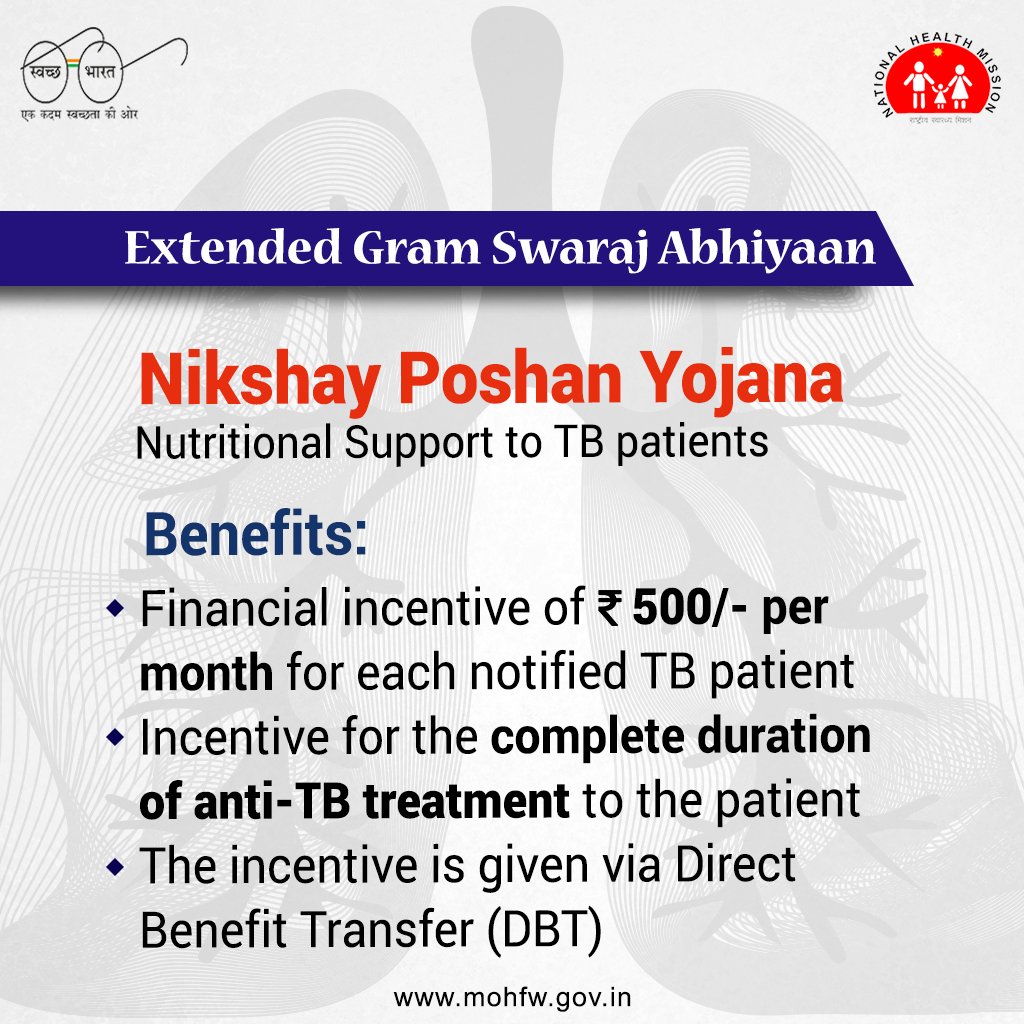
NATIONAL INVESTMENT AND INFRASTRUCTURE FUND (NIIF)
Focus: GS 3; Indian Economy and issues relating to planning, mobilization, of resources, growth, development and employment.
Why in News?
Cabinet approves Capital infusion into NIIF Infrastructure Debt Financing Platform comprising Aseem Infrastructure Finance Limited and NIIF Infrastructure Finance Limited
About National Investment and Infrastructure Fund (NIIF)
- The government had set up the ₹40,000 crore NIIF in 2015 as an investment vehicle for funding commercially viable greenfield, brownfield and stalled infrastructure projects.
- The Indian government is investing 49% and the rest of the corpus is to be raised from third-party investors such as sovereign wealth funds, insurance and pension funds, endowments, etc.
- NIIF’s mandate includes investing in areas such as energy, transportation, housing, water, waste management and other infrastructure-related sectors in India.
- NIIF currently manages three funds each with its distinctive investment mandate. The funds are registered as Alternative Investment Fund (AIF) with the Securities and Exchange Board of India (SEBI).

- The three funds are as follows
- Master Fund: Is an infrastructure fund with the objective of primarily investing in operating assets in the core infrastructure sectors such as roads, ports, airports, power etc.
- Fund of Funds: Managed by fund managers who have good track records in infrastructure and associated sectors in India. Some of the sectors of focus include Green Infrastructure, Mid-Income & Affordable Housing, Infrastructure services and allied sectors.
- Strategic Investment Fund: Is registered as an Alternative Investment Fund II under SEBI in India. The objective is to invest largely in equity and equity-linked instruments. It will focus on green field and brown field investments in the core infrastructure sectors.
PRAGATI
Focus: GS 2; Important aspects of governance, transparency and accountability, e-governance applications, models, successes, limitations, and potential; citizens charters, transparency & accountability and institutional and other measures.
Why in News?
PM chairs 33rd PRAGATI interaction
About Pro- Active Governance and Timely Implementation (PRAGATI)
- It is a platform which enables the Prime Minister to discuss the issues with the concerned Central and State officials with full information and latest visuals of the ground-level situation.
- It was launched in 2015 and has been designed by the Prime Minister’s Office (PMO) team with the help of National Informatics Center (NIC).
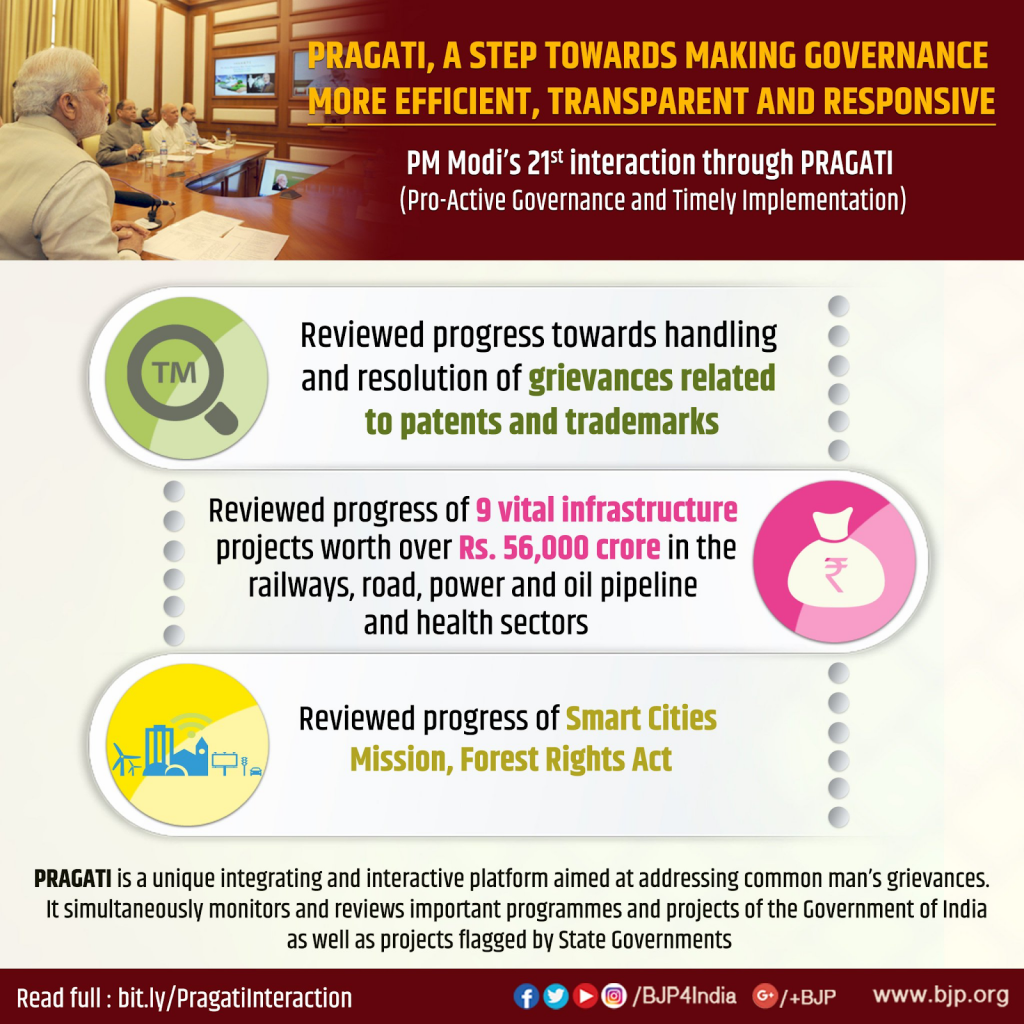
- It is a three-tier system (PMO, Union Government Secretaries, and Chief Secretaries of the States).
- The three objectives of PRAGATI are:
- Grievance Redressal
- Programme Implementation
- Project Monitoring
- The PRAGATI platform uniquely bundles three latest technologies: Digital data management, video-conferencing and geo-spatial technology.
- It promotes cooperative federalism as it brings on one platform the Secretaries of Government of India and the Chief Secretaries of the States.
- However, the direct interaction of the PM with the state secretaries without involving the political executives of the states is undermining the State political executive.
- It is also said that this is leading to a concentration of power in the extra-constitutional office of PMO.
- It is a robust system for bringing e-transparency and e-accountability with real-time presence and exchange among the key stakeholders.
- It is an innovative project in e-governance and good governance.



